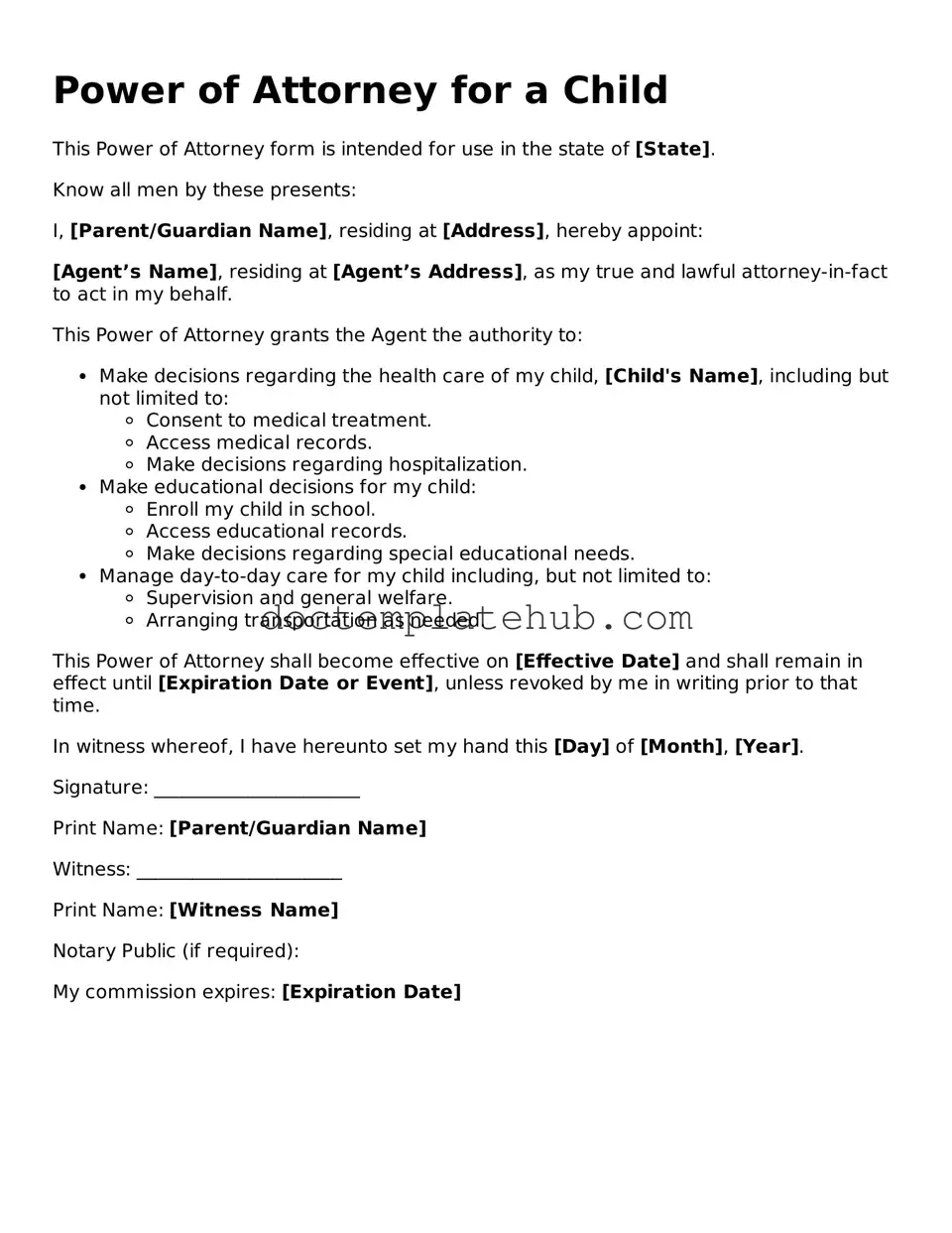What is a Power of Attorney for a Child?
A Power of Attorney for a Child is a legal document that allows a parent or legal guardian to designate another adult to make decisions on behalf of their child. This can include decisions related to healthcare, education, and general welfare. The appointed individual, often referred to as the "agent," can act in the parent's stead for a specified period or under certain conditions.
When might I need to use this form?
This form is particularly useful in situations where a parent or guardian will be temporarily unavailable, such as during travel, military deployment, or medical emergencies. It ensures that the child’s needs are met and that someone is authorized to make important decisions in the parent’s absence.
Who can be appointed as an agent?
Any responsible adult can be appointed as an agent. This could be a relative, family friend, or trusted neighbor. It is essential to choose someone who is reliable and understands the responsibilities involved in caring for your child.
Are there any limitations to the Power of Attorney for a Child?
Yes, there are limitations. The authority granted can be restricted to specific areas, such as medical decisions or educational matters. Additionally, the Power of Attorney does not confer custody; it merely allows the agent to make decisions on behalf of the child while the parent or guardian is unavailable.
How long does the Power of Attorney remain in effect?
The duration of the Power of Attorney can vary. It may remain in effect until a specified date, until the parent returns, or until the parent revokes it. It is advisable to clearly state the duration in the document to avoid any confusion.
Do I need to have the form notarized?
Notarization is not always required, but it is highly recommended. Having the document notarized adds an extra layer of validity and can help avoid disputes regarding its authenticity. Some states may have specific requirements regarding notarization, so it is essential to check local laws.
Can the Power of Attorney be revoked?
Yes, the Power of Attorney can be revoked at any time by the parent or guardian. To revoke the document, a written notice should be provided to the agent and any relevant institutions, such as schools or healthcare providers, to ensure that they are aware of the change.
Where can I obtain a Power of Attorney for a Child form?
Power of Attorney for a Child forms can often be obtained from legal aid organizations, family law attorneys, or online legal services. It is important to use a form that complies with your state’s laws to ensure that it is legally binding.
